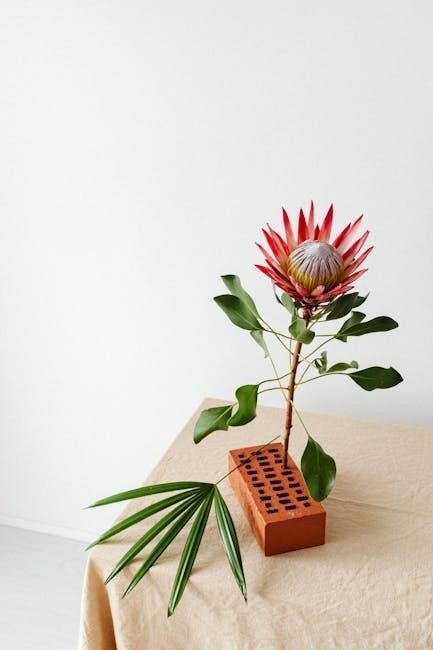Photography styling is the art of enhancing images through strategic prop placement, wardrobe choices, and scene setup, transforming ideas into visually compelling stories.
1.1 What is Photography Styling?
Photography styling is the process of curating visual elements to enhance the aesthetic and narrative of an image. It involves selecting props, wardrobe, and setups that align with the shoot’s theme, ensuring a cohesive and impactful visual story. Styling transforms ordinary scenes into extraordinary ones, making the subject stand out while conveying the intended mood or message. It requires creativity, attention to detail, and a deep understanding of the concept to create images that captivate and engage the viewer effectively.
1.2 The Importance of Styling in Photography
Styling is crucial for enhancing the visual appeal and emotional impact of photographs. It ensures that every element, from props to wardrobe, aligns with the shoot’s theme, creating a cohesive and engaging image. Proper styling guides the viewer’s attention, evokes the desired mood, and communicates the story effectively. In professional photography, styling elevates the quality of the image, making it stand out and leaving a lasting impression on the audience.

The Role of a Photo Stylist
A photo stylist creates and enhances visual scenes by coordinating props, wardrobe, and settings, ensuring the concept is visually compelling and aligned with the desired aesthetic.
2.1 Understanding the Job of a Photo Stylist
A photo stylist is responsible for creating visually appealing scenes by selecting and arranging props, wardrobe, and settings. They collaborate with photographers and directors to ensure the concept aligns with the desired aesthetic. Their role involves understanding the theme, coordinating elements, and enhancing the overall visual narrative. Stylists bring creativity and attention to detail to transform ideas into polished, professional images that captivate audiences and convey the intended message effectively.
2.2 Key Responsibilities of a Photo Stylist
A photo stylist’s primary role involves conceptualizing and executing the visual theme of a shoot. They select props, arrange settings, and style wardrobe to align with the creative vision. Responsibilities include sourcing materials, coordinating with teams, and ensuring consistency in the aesthetic. Stylists also collaborate with makeup and hair artists to enhance the overall look. Their attention to detail ensures every element contributes to a cohesive and impactful visual narrative, making them indispensable in creating polished, professional images.
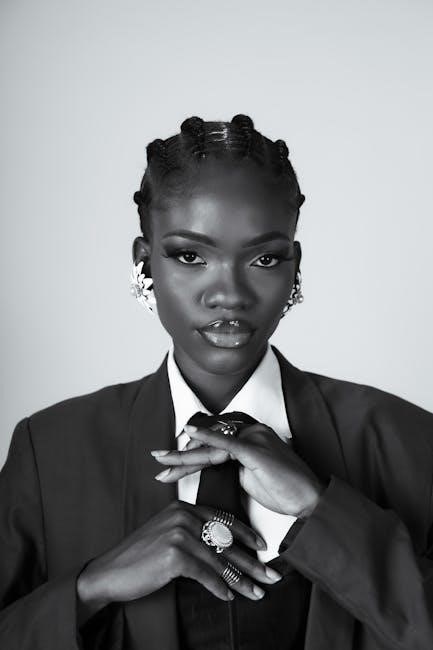
Essential Principles of Photography Styling
Essential principles of photography styling involve creating balance, harmony, and visual appeal through thoughtful composition, lighting, and texture, ensuring every element enhances the overall narrative.
3.1 Color Coordination in Photography
Color coordination is crucial in photography, as it sets the mood and creates visual balance. Using complementary colors enhances contrast, while monochromatic schemes evoke harmony. Neutral tones like beige and gray provide a clean backdrop, allowing vibrant hues to stand out. The 60-30-10 rule—60% dominant color, 30% secondary, and 10% accent—ensures a polished look. Natural light amplifies color vibrancy, and bold accents add depth. Proper color coordination guides the viewer’s eye, making the subject the focal point and elevating the overall aesthetic of the image.
3.2 The Role of Lighting in Styling
Lighting is a fundamental element in photography styling, as it sets the mood and highlights textures, shapes, and colors. Natural light offers soft, warm tones, while artificial lighting provides controlled dramatic effects. Proper lighting enhances visual appeal, creating depth and dimension. It directs attention to the subject, making it stand out. Balancing light and shadow ensures a professional, polished look, elevating the overall aesthetic of the image and bringing the stylist’s vision to life effectively.
3.3 Composition and Visual Balance
Composition and visual balance are crucial in photography styling, ensuring images are aesthetically pleasing and engaging. The rule of thirds, symmetry, and leading lines guide the viewer’s eye, creating harmony. Balancing elements like color, texture, and negative space prevents clutter, focusing attention on the subject. Proper alignment and framing enhance storytelling, making the scene cohesive and visually appealing. These principles help stylists craft images that are both artistic and impactful, drawing the viewer into the narrative of the photograph.
3.4 Texture and Layers in Photography
Texture and layers add depth and dimension to photographs, engaging the viewer’s eye. Mixing smooth, rough, and patterned textures creates visual interest, while layers guide the narrative. Incorporating fabrics, props, and natural elements enhances the scene’s complexity. Stylists use these elements to evoke emotions and tell stories, ensuring the image feels dynamic and polished. Balancing texture and layers is key to creating a cohesive, professional look that draws the viewer into the frame and enhances the overall aesthetic of the photograph.
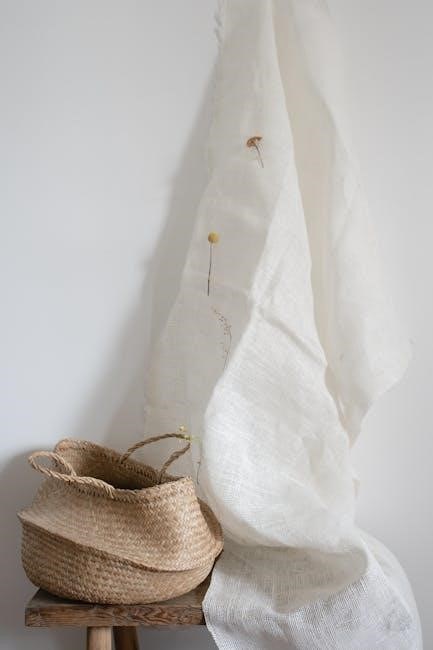
Preparing for a Photoshoot
Understanding the theme, selecting props, and planning wardrobe and location ensure a cohesive and visually stunning outcome, setting the foundation for a successful photography session.
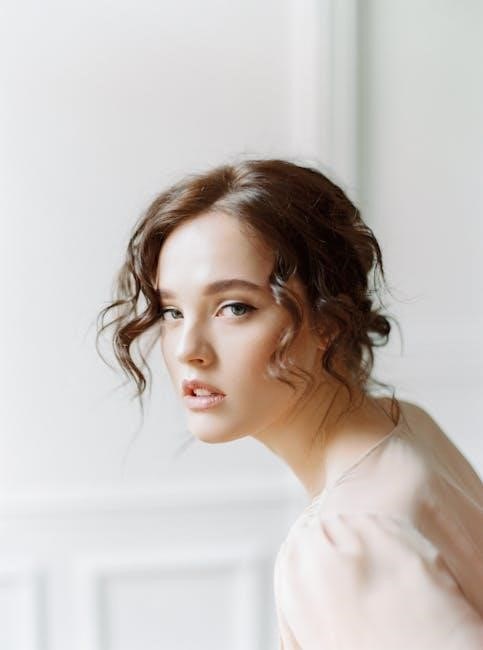
4.1 Understanding the Theme and Concept
Understanding the theme and concept is crucial for creating cohesive visuals. It involves interpreting the client’s vision, researching inspiration, and aligning all elements like props, wardrobe, and location to reflect the desired mood and style. A well-defined concept ensures consistency, making the photoshoot more focused and impactful. This step also helps in communicating effectively with the team, ensuring everyone is on the same page, which is essential for achieving the desired aesthetic and storytelling goals.
4.2 Selecting Props for the Shoot
Selecting props is essential for enhancing the visual narrative of a photoshoot. Props should align with the theme, color palette, and overall style to create a cohesive look. Consider the balance between functionality and aesthetics, ensuring props complement the subject without overwhelming it. Versatile items like vintage furniture, textured fabrics, or seasonal elements can add depth and interest. Meaningful props can also evoke emotions, making the image more engaging. Always test props during setup to ensure they enhance the scene and align with the creative vision.
4.3 Wardrobe Selection and Styling
Wardrobe selection is crucial for photography styling, as it reflects the subject’s personality and the shoot’s theme. Choose outfits that align with the concept, ensuring colors, patterns, and textures complement the setting. Consider the balance between style and comfort to allow natural movement. Layering and accessories can add depth, while avoiding overly bold patterns that distract. Ensure fabrics drape well and fit appropriately for a polished look. The wardrobe should enhance the story, creating a cohesive visual narrative that captivates the viewer.
4.4 Location Scouting and Setup
Location scouting is essential for creating the perfect backdrop for your photoshoot. Look for spaces that align with the theme and offer good lighting, accessibility, and space for props. Natural light is ideal, but ensure the location has options for artificial lighting if needed. Once selected, set up the area by arranging props, styling elements, and ensuring a clean, organized environment. A well-prepared location enhances creativity and efficiency, allowing the team to focus on capturing high-quality images that tell the intended story.
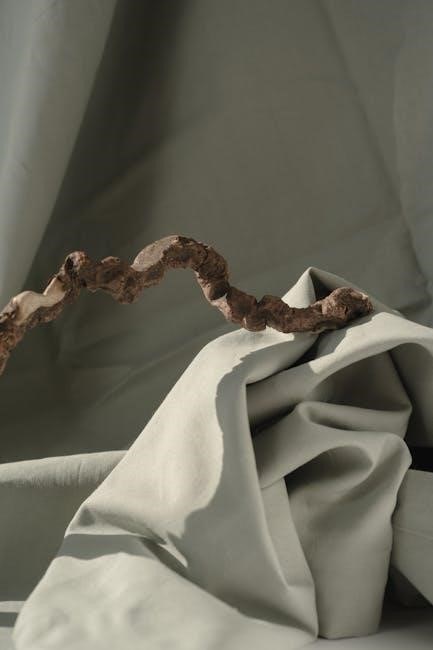
Wardrobe and Styling Tips
Choose outfits that complement the theme, ensuring colors, patterns, and textures align. Keep styling simple yet impactful, balancing comfort with visual appeal for authentic, polished results.
5.1 Choosing the Right Colors for the Theme
Color selection is crucial for creating a cohesive look. Opt for hues that align with the shoot’s theme, ensuring they evoke the desired mood. Use a color wheel to find complementary tones and balance bold shades with neutrals. Consider lighting conditions, as colors may appear differently under natural or artificial light. Test fabrics and props beforehand to ensure harmony. Avoid overcomplicating the palette—focus on 2-3 key colors for a polished, professional result that enhances the subject and story being told.
5.2 Patterns and Fabrics in Wardrobe Selection
Patterns and fabrics play a significant role in enhancing the visual appeal of photographs. Mixing textures like velvet, silk, and cotton adds depth, while subtle patterns can create interest without overwhelming the subject. Neutral backgrounds allow bold fabrics to shine, ensuring the subject remains the focal point. Avoid overly busy patterns that distract from the theme. Instead, opt for complementary textures that align with the shoot’s aesthetic, ensuring a polished and cohesive look that elevates the overall composition.
5.3 Accessories and Their Impact
Accessories are powerful tools in photography styling, adding depth and personality to images. Hats, jewelry, scarves, and belts can enhance the subject’s character and create context. They draw attention to key features or themes, making the composition more engaging. However, over-accessorizing can distract, so balance is key. Choose items that complement the wardrobe and theme, ensuring they don’t overshadow the subject. Simple, meaningful accessories often yield the most impactful results, elevating the photo’s storytelling potential while maintaining a cohesive aesthetic.
Makeup and Hair Styling
Makeup and hair styling enhance the subject’s features, aligning with the shoot’s theme. Natural looks highlight authenticity, while dramatic styles create bold, artistic expressions, balancing aesthetics seamlessly.
6.1 Natural vs. Dramatic Makeup Looks
Natural makeup enhances the subject’s features subtly, creating a timeless and authentic appearance ideal for lifestyle or portrait photography. Dramatic makeup, with bold colors and contours, adds intensity and artistic flair, perfect for creative or high-fashion themes. Both styles require precision to align with the shoot’s concept, ensuring the makeup complements the overall aesthetic without overpowering it. The choice between natural and dramatic depends on the desired mood and the story the image aims to convey, making makeup a powerful tool in photography styling.
6.2 Hair Styling Tips for Photography
Hair styling plays a crucial role in enhancing the visual appeal of photographs. For natural looks, opt for soft, effortless styles like loose waves or sleek ponytails. Dramatic styles, such as bold updos or vibrant colors, can add flair to creative shoots. Ensure hair is clean and well-groomed to avoid distractions. Minimize flyaways using light-hold sprays or serums. Avoid overly bold styles unless they align with the shoot’s theme. Styling should complement the subject’s features and the overall aesthetic of the image, ensuring a polished and cohesive look in every frame.
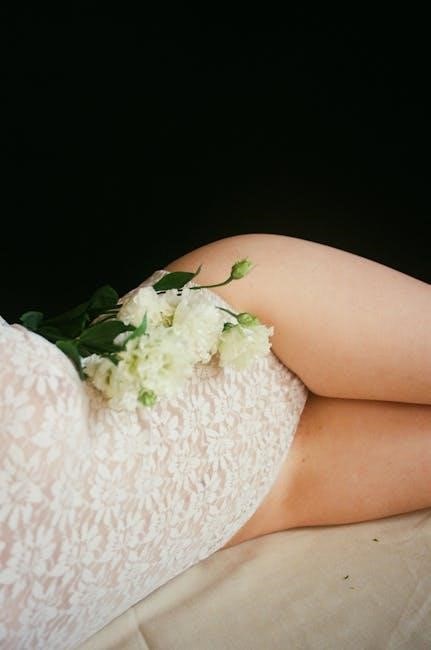
Working with Props
Working with props involves selecting and arranging items to enhance a photo’s theme. Props should be relevant, balanced, and creatively used to add depth without distracting from the subject.
7.1 Creative Prop Ideas for Different Themes
Creative prop ideas can elevate your photos by adding context and depth. For natural themes, use flowers, branches, or vintage wooden crates. Rustic settings benefit from distressed furniture, lanterns, or woven baskets. Vintage themes shine with antique items like clocks, lace, or old books. Minimalist styles can incorporate clean lines with simple objects like glass vases or monochromatic fabrics. Themed props like hats, scarves, or specific accessories can also enhance storytelling. Experiment with textures, colors, and sizes to create visually appealing compositions that align with your shoot’s concept.
7.2 Tips for Effective Prop Styling
Effective prop styling begins with simplicity and relevance to the theme. Experiment with textures, colors, and sizes to add depth without overwhelming the frame. Balance props naturally, avoiding clutter, and ensure they complement the subject. Use props to tell a story or evoke emotion, scaling them to fit the scene. Pay attention to details like alignment and placement to enhance composition. Finally, ensure props align with the overall aesthetic, creating a cohesive and visually engaging image that captures the intended mood.
Lighting in Photography Styling
Lighting is crucial for setting the mood and enhancing visual appeal. Use natural or artificial sources to create depth, dimension, and atmosphere, ensuring the scene feels authentic and polished.
8.1 Using Natural Light Effectively
Natural light is a powerful tool in photography styling, offering soft, warm tones that enhance authenticity. Shoot during the golden hour for soft, diffused light or use overcast days for even illumination. Avoid harsh midday sun, as it can create unflattering shadows. Reflectors can help direct light to desired areas, while sheer curtains indoors soften direct sunlight. Natural light adds depth and emotion to images, making scenes feel more genuine and visually appealing. Mastering its use elevates the overall aesthetic of your photos, creating timeless and captivating results.
8.2 Artificial Lighting Setup and Techniques
Artificial lighting offers precise control over your photography styling, enabling you to create specific moods and effects. Use softboxes for soft, diffused light or sidelighting for depth and dimension. Experiment with backlighting to highlight textures and create separation from backgrounds. Adjust white balance to match your light sources, ensuring consistent color tones. Layering lights, such as combining a key light with fill and accent lights, enhances dynamic range. Reflectors can redirect light to fill shadows, while gels add color for creative effects. Proper artificial lighting setup transforms scenes, ensuring polished and professional results in any environment.
Post-Processing and Editing
Post-processing and editing refine your photos, enhancing colors, correcting flaws, and adding polish. Use software tools to balance exposure, contrast, and saturation, ensuring a cohesive final look.
9.1 The Role of Editing in Photography Styling
Editing plays a crucial role in refining and enhancing photographs, ensuring they align with the desired aesthetic and mood. It involves color correction, exposure adjustments, and retouching to perfect the image. Skilled editors can remove distractions, soften harsh lines, and amplify textures, all while maintaining the authenticity of the scene. Editing also allows for creative enhancements, such as adding filters or adjusting contrast, to elevate the visual appeal. By balancing technical precision with artistic vision, editing transforms raw captures into polished, professional-grade images that captivate and engage viewers.
9.2 Retouching Tips for Polished Images
Retouching is essential for achieving flawless, professional-looking photographs. Start by using software like Photoshop or Lightroom to subtly soften harsh lines and blemishes. Adjust color balance and exposure to enhance the mood. Remove distractions without over-editing to maintain authenticity. Pay attention to details like stray hairs or unwanted reflections. Use the clone stamp tool sparingly to avoid noticeable edits. Save multiple versions to compare and refine. The goal is to enhance the image while keeping it natural and true to the original vision, ensuring a polished yet believable result.
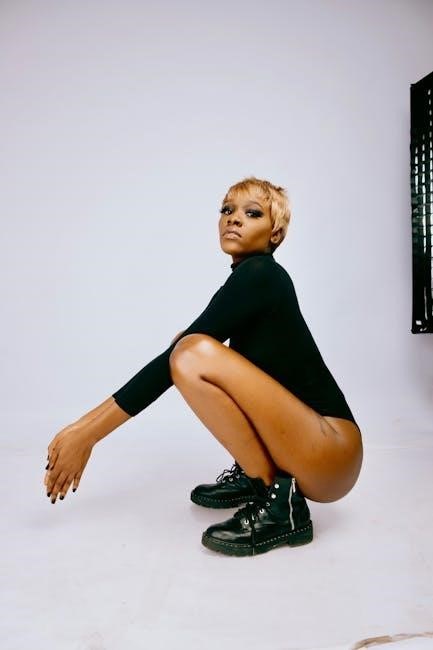
Budget and Time Management
Effective budgeting and time management are crucial for successful photography styling. Plan expenses, prioritize needs, and allocate resources wisely to stay within budget and meet deadlines.
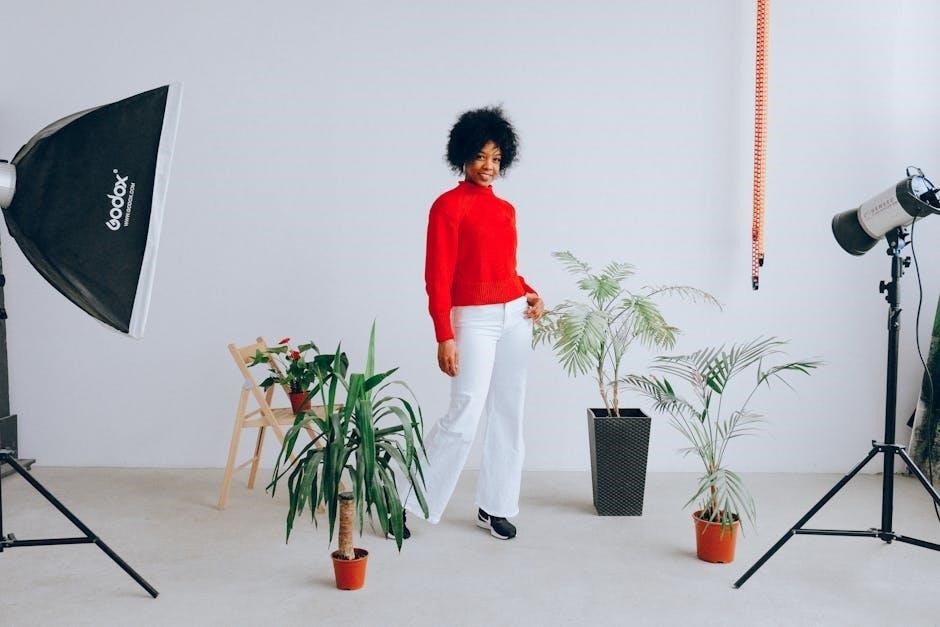
10.1 Managing Costs for Styling
Managing costs for styling involves budgeting effectively and prioritizing expenses. Start by identifying essential elements like props, wardrobe, and location. Consider renting items or repurposing existing ones to save money. Negotiate with vendors for better rates and plan ahead to avoid last-minute purchases. Allocate funds wisely, focusing on high-impact details that enhance the visual narrative. Balancing creativity with cost-efficiency ensures a polished result without overspending, making your photoshoot both stylish and budget-friendly.
10.2 Time Efficiency in Photoshoots
Time efficiency in photoshoots is crucial for achieving desired results without delays. Plan thoroughly, create a detailed checklist, and prioritize shots to minimize downtime. Ensure all props, wardrobe, and equipment are ready beforehand. Assign tasks to team members to streamline the process. Use a shot list to stay focused and avoid unnecessary setups. Encourage quick wardrobe changes and prop arrangements to save time. Efficient time management leads to a smooth, productive, and successful photoshoot, allowing creativity to flow without rushing;
Photography styling transforms ideas into visually stunning stories, balancing creativity with technical precision. Mastering these elements ensures polished, professional results, inspiring continuous learning and artistic growth in photography.
11.1 Summing Up the Key Points
Photography styling is a blend of creativity and technical skill, focusing on props, wardrobe, and lighting to create visually compelling images. Understanding the theme ensures cohesive styling, while props enhance storytelling. Wardrobe and accessories should align with the concept, and lighting must complement the setup. Balancing color, texture, and composition is essential for visual harmony. Post-processing refines the final look, making styling a holistic process that elevates photography from ordinary to extraordinary, capturing the intended mood and narrative effectively.
11.2 Final Tips for Successful Photography Styling
Plan meticulously, ensuring every detail aligns with the theme. Experiment with lighting setups and props to enhance visual appeal; Keep wardrobe choices simple yet impactful, balancing colors and textures. Pay attention to accessories, as they can elevate the narrative. Stay flexible during shoots, adapting to unexpected opportunities; Post-processing is crucial for refining the final look. Practice consistently to refine your skills and develop a unique style. Remember, styling is about storytelling—every element should contribute to the overall vision, creating images that captivate and inspire.
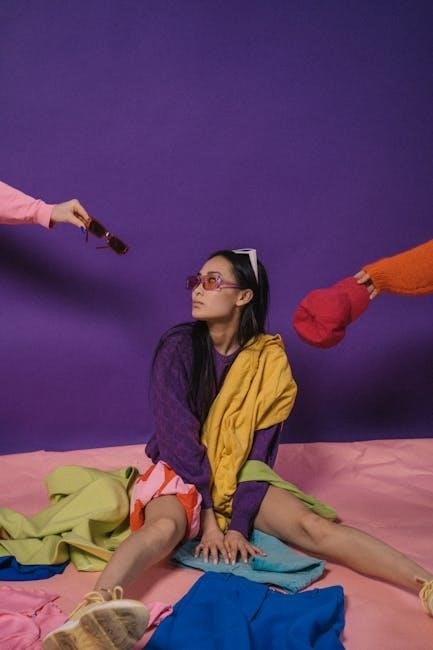
Additional Resources
Explore Fstoppers, Photography Life, and PetaPixel for tutorials, gear reviews, and inspiration. Online courses on platforms like Udemy and Skillshare offer in-depth photography styling training.
12.1 Recommended Reading and Tutorials
For in-depth learning, explore resources like Fstoppers, Photography Life, and PetaPixel, offering tutorials, gear reviews, and inspiration. Check out books such as The Art of Photography by Bruce Barnbaum and The Photographer’s Eye by Michael Freeman for styling insights. Online platforms like Udemy and Skillshare provide courses on photography styling, while YouTube channels like “Tony Northrup” and “Peter McKinnon” share practical tips. These resources will help refine your skills and stay updated on industry trends.
12.2 Online Courses for Photography Styling
Enroll in online courses on platforms like Udemy, Skillshare, and Coursera to master photography styling; Courses cover topics such as wardrobe selection, prop styling, and lighting techniques. Platforms like MasterClass offer lessons from industry experts, while CreativeLive provides live workshops. These resources cater to all skill levels, from beginners to advanced photographers, ensuring a comprehensive learning experience. They often include hands-on projects and feedback, helping you refine your styling skills and adapt to industry standards.
